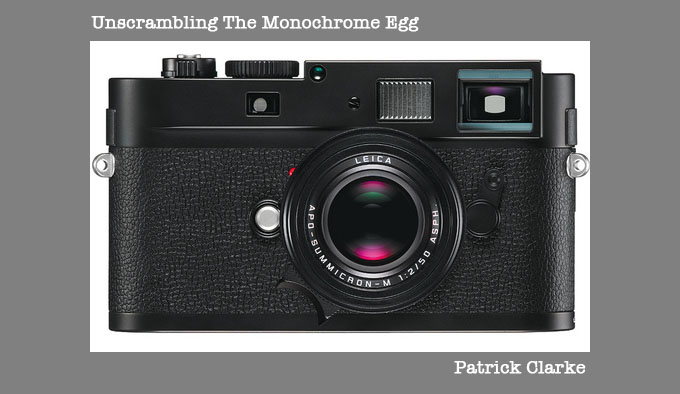
Unscrambling The Monochrome Egg
By Patrick Clarke – see his Blog HERE
When Leica announced “Henri”, the M9 Monocrom on May 10th, it caused a lot of fervor on blogs and photography websites. The all black camera, named after the legendary black and white Leica photographer Henri Cartier-Bresson was devoid of almost all Leica markings and seemed niche even for the niche camera maker.
First, it was a monochrome only sensor. Leica had worked with True Sense Imaging (what used to be Kodak’s Sensor division) and took the KAF-18500 color sensor found in the M9 and made a black and white version. Secondly, it caused a lot of talk not only because it was black and white only, but at $8,000, it cost MORE than an M9 that could shoot color and have its shots converted to black and white in software!
Does it really cost more to create a black and white sensor, or is Leica just artificially creating a price point for such a unique Leica camera? And why would we want a black and white only sensor anyway?
As a black and white film shooter, I’ve looked at digital cameras as hindrance to getting to my final monochrome image. Even the best DSLR doesn’t have the dynamic range and clarity of a good black and white film, and there is a lot of time spent editing color photos to make them look like film. And since I spend my work days in front of a computer, the last thing I want to do is edit color photos in Aperture all night.
[ad#EMBED]
If you’ve seen the test shots from the Leica Monocrom, (more here) you can see that this camera shoots digital that looks more and more like film. It has grain instead of noise. The idea of a black and white only digital camera, to me, is a great thing if I can get shots that are the best things I like about film, with the advantages of digital. But I don’t have $8,000 to spend on such a thing and I don’t think Leica will send me a camera to play with anytime soon. So, I guess anyone like me is out of luck if they wanted to play in the black and white only digital land.
Luckily Leica isn’t the only maker of black and white only cameras today.
That company is LDP, LLC, and it’s website MaxMax.com. They have been converting cameras to black and white and other spectrums for some years now. You see, all camera sensors are black and white at their base. It’s a lot like film at this point, but to “see” color, manufacturers add microlenses, CFA “color filters” in a Bayer pattern that software takes and makes a color image and an Optical Low-Pass Filter to get rid of inherent aliasing and moire problems with the Bayer pattern. The black and white sensor gets stacked like a sandwich to make pictures. Yes, pictures that we black and white lovers spend hours converting back to black and white.
I got the opportunity to chat with the President of LDP, Dan Llewellyn and ask him a few questions about what they do to convert cameras back to their black and white roots. Read on.
When did you decide to try to convert a digital camera to black and white?
I had been thinking about it for over 10 years. About 4 years ago, we started doing experiments. It took about 2 years before we started having some good success. We have a box of broken sensors and went through lots of prototype custom machines.
Why did you do it?
To get a higher resolution picture. A color sensor typically has 1 red, 2 green and 1 blue sensor for every 4 pixels. This means if you take a black and white test chart and illuminate with a pure blue LED light only 25% of the cameras will see the chart. 75% will see black.
Another reason is that the sensor’s microlenses and Color Filter Array (CFA), block most of the UV light. A UV-Only monochrome camera can see 6 x better than the same camera with the microlenses and CFA. A Visible-Only monochrome camera gains about 1/2 stop from a stock camera. An 715nm IR-Only monochrome camera has about the same sensitivity as a 715nm IR-Only color camera.
Wow. If you are an IR shooter it certainly is quite the gain, and a half a stop is nothing to sneeze at. There is an often argued notion that a piece of 100 ISO Kodak T-Max black and white film has 2300 lines of resolution in it. A consumer level Canon T2i has around 2500 lines of resolution in it’s color form, but lacks the sharpness of film. Do you know how a converted camera compares to traditional black and white film?
I haven’t tried a test versus film. Interesting idea, but I haven’t shot with film for quite a while!
I know you do other conversions, like Infrared and “Hot Rod” as well as Black and White, so, what do you do to convert a camera?
IR UV-VIS-IR and HR conversions are much, much easier. To convert B&W, you have to remove the sensor coverglass and the CFA. Neither operation is trivial! The biggest issue with converting any camera is doing a clean conversion. There are shops out there that consist of a guy converting a camera to IR-Only on his kitchen table. But to do it well with really clean glass takes special equipment and techniques.
As far as monochrome conversions, we are the only shop that we know of that can do it. I once talked to a guy that runs the largest camera repair business in the USA with over 1,000 technicians about the monochrome conversions. He said they tried and came to the conclusion that a monochrome conversion was impossible. I found some discussions many years ago from some experimenters that used some hot toxic solvents, but, they never showed more than a small sample of their conversion and seemed to have given up.
Wow. So, no small task. Why not just do what Leica did and buy a black and white sensor and put it in the camera?
It’s not an option. If the manufacturers wanted to make a B&W camera, they could easily do so. Kodak made a B&W DLSR at one point. The problem is that the B&W market is small and the manufacturers want to sell large volumes. Texas Instruments makes a Digital Light Projection chip for video projectors. The normal visible chip costs $65. They also make a special version that has a UV transparent window that costs $2,000. The problem is that to make the UV chip requires shutting down the line for a small run. Leica is better suited to make a B&W camera because they are a small volume manufacturer, but, even then, their costs are probably quite high to make the B&W chip.
Is there anything that makes the purpose-built Leica sensor better than a converted one?
The Leica is going to be a more perfect camera since it was made to be monochrome. Typical conversions can have small traces of CFA left typically around the edges or other minor stuff that can be an issue for the pixel peeper types, though not an issue for practical shooting.
The cost of the Leica is often debated. Since it’s a “simpler” sensor, shouldn’t it cost less?
The cost of the Leica monochrome camera probably reflects their cost to make a very limited run of sensors. For the manufacturer, it is easier to make a monochrome camera that a color camera since all they have to do is not add the CFA during the manufacturing process. The problem is that to make the limited run and market the camera costs a bunch of money. We start with a color sensor and have to work backwards removing about 7 microns off the surface of the sensor without killing it in the process which is a bit like unscrambling an egg. For them, they just don’t need to crack the egg.
Since they are Leica and Henri Cartier-Bresson was such an influential photographer, I can see why they would create such a camera. Do you think Nikon, Canon or Sony will do the same?
For any monochrome or other specialized camera, the biggest problem is that it is specialized. The market is not that big, so even if you figure out the technical side, you still have to find the sales. For the big guys like Sony, Olympus, Nikon and Canon, the sales numbers for niche cameras will kill the line. For a little shop like us, we can find customers, but, keep in mind that we convert cameras to IR-Only 590nm, 630nm, 660nm, 715nm and 830nm; to High Resolution (no OLPF), UV-Only, monochrome, UV-VIS-IR, vegetation stress and more. And cameras are only one part of what we do which includes specialized cameras filters, phosphors, lights and inks.
Let’s get back to your conversions. What you do sounds very complex and time consuming. How long does it typically take to convert a sensor to monochrome?
That depends on the camera model and how well it goes. It is not uncommon to kill a sensor and have to start from scratch with a new sensor, though we are getting better with each conversion. Some sensors are harder to work with than others. We usually budget at least a day of work at this point though it can sometimes take a few days.
What is the most difficult part of the process?
Aside from the monochrome conversions, the hardest part is getting the glass that goes in the camera really clean. You can’t use optical wipes, swabs and solutions for the really small particles. Small dust is bound to the glass by electrostatic force. On really small particles, the electrostatic forces are incredibly strong. When you look at the glass under a microscope, the dust looks like the it is held by a magnet. Any time you touch the glass with anything, you leave something behind. To get the glass clean to an atomic level, you need special equipment and things like a clean room. That’s why the guy doing the conversion on the kitchen table cannot possibly do a clean conversion. In addition to that, you need to understand how the glass you put in the camera can change the focal plane of the camera not to mention how to take the camera apart.
That brings up a good point. There are a lot of “Dirty Sensor” cleaning kits out there, what’s your advice for people?
We tell our customers to never touch the glass unless absolutely necessary. Any time you touch the glass, something will be left behind. Hopefully, it is less than what you removed by touching it, but we have seen customers destroy their ICF/AA (the glass in front of the sensor) by trying to clean every spec of dust that can only be seen by shooting a white field at F22 and inspecting the picture in Photoshop. If the dust isn’t causing a problem for normal pictures, don’t create a problem for yourself by touching the sensor. Aside from ignoring the dust, the first type of cleaning should be using clean, compressed air cans being very careful not to tip the can too much. If you tip the can too far, you can get the can liquid squirting out the tip which will leave a residue that is even harder to get removed.
What about other types of cleaning?
The clean room swabs are our 2nd choice, but this always leaves little bits of the swab on the sensor. Liquid cleaning is the last option because this has the potential to cause big problems. When you have a solvent on the sensor, that solvent is never 100% pure. That means that when it evaporates, something will be left on the sensor. We have tested lab grade 9.99999% solvents (known as 5 nines), and even that leaves a visible line where it evaporates last.
That’s amazing, and scary at the same time. I don’t think I want to open up my camera any more. While you are doing a conversion, is there anything else you do to check on how it’s going or potentially change on the sensor?
We can also do things like measure the camera’s spectral response and quantum efficiency which helps us understand exactly how the camera’s sensor sees various light frequencies so that we can design some very specific products.
Does the size of the sensor have any effect on how long or complex the conversion is?
The bigger sensors have more surface area so they take more work. Some cameras are really complex to take apart. When we take some cameras apart, you end up with over a 100 small parts on the workbench. Other cameras are more straightforward.
As of this writing, you only sell converted Canon’s in monochrome. Are there plans for other camera’s like Nikon, or Sony?
We have converted Nikon cameras to black and white, but the biggest issue with them is removing the sensor cover glass which is epoxied to the sensor without damaging the sensor. While we have converted the Nikon cameras successfully, we still have a high enough failure rate that we aren’t ready to release them for sale. We have had inquiries to convert Sony and 4/3 cameras. We will eventually try some other brands, but, for some brands, the manufacturers won’t sell the sensors we need for R&D, so we have to buy older cameras to salvage the sensors.
Ha-ha. Well, if you ever want to try a Sony DSLR conversion, I have an A100 that would love to be converted! I love the idea of a true black and white digital camera and the Leica Monocrom intrigues me that it is on the market. Do you think we’ll see more mainstream monochrome cameras?
Most people would just as soon convert to black and white in Photoshop rather than having a dedicated monochrome camera. Not many understand the difference between a monochrome camera versus converted a color picture to monochrome in post. A limited range of hardcore black and white photographers and scientists understand the advantage of a monochrome camera, but I don’t think it will ever be mainstream.
That is very true. I’ve seen a lot of conversations on this subject and either people don’t understand the reason for a black and white image at all, or they don’t understand, nor care about why a true monochrome camera would be better for black and white.
What amazes me about what MaxMax does, is that for around $1,900, you can get a Canon T2i that will shoot better than a higher end Canon that shoots color, and if you look at the examples, with the removal of the Bayer Array, the sensor has “grain” and looks more like film than any converted color images.
I see guys throw down the same amount for a lens, so the idea of a dedicated black and white shooter isn’t out of the realm of reason for a lot of monochrome lovers. If I was a Canon shooter, I would have one of these cameras, but since I’ve invested in Sony/Minolta, I just can’t justify a whole new system just for monochrome digital shooting, but it’s oh-so tempting for sure.
You can visit their website and read more about the black and white conversion and what it does, view sample photos and even download some RAW versions to play with yourself. I highly suggest you do. Check out their cameras for sale here, and let them know you heard about it on this blog!
I’d like to thank Dan for taking the time to answer my questions, and shedding some light on something that black and white film photographers take for granted.

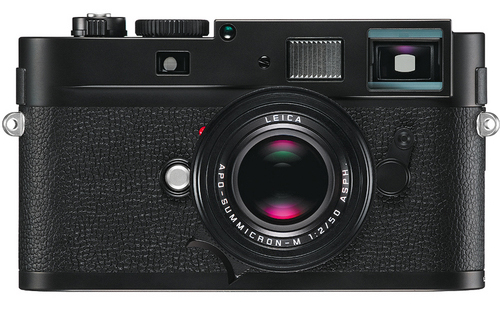
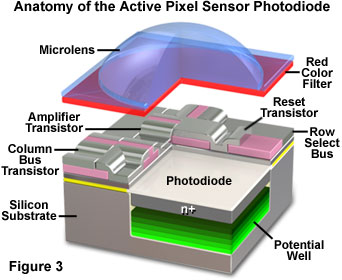

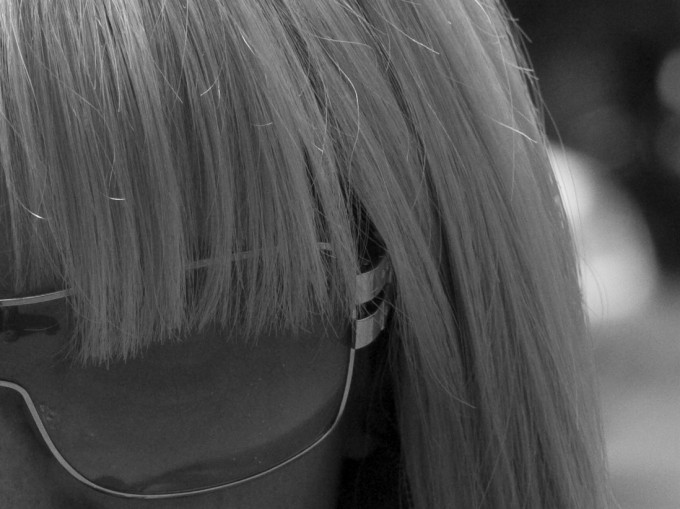
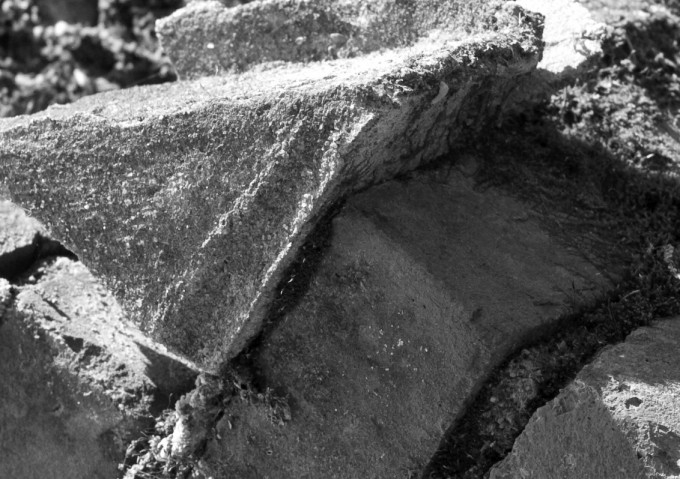
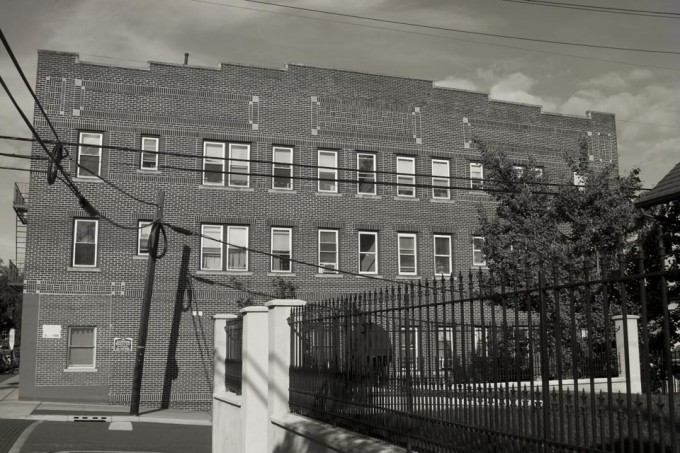


I wonder if it is possible to get Patrick Clarke and http://www.maxmax.com/ interested and willing to convert Leica M8 and M8.2 cameras with KAF-10500 sensors into monochrom(e)???
The used (second hand) prices of these cameras are coming down, and I think the KAF-10500 sensors may be slightly easier to get hold of than the KAF-18500 (which may be an exclusive OEM for Leica).
Neither of these sensors are listed on http://www.truesenseimaging.com/, but I have seen wholesalers that claim to have KAF-10500 sensors, and I believe these also were used in some Japanese brand cameras.
Just an idea 🙂
Next stop, Foveon! If only Leica could and would work out an agreement with Sigma develop and use a full-frame Foveon sensor. I’d buy one in a heart-beat, bank account willing… Is sensor technology ever going the route of film emulating layers, or will we be stuck with bayer-based arrays or similar for the foreseeable future?
Nice article on the craft of removing the Bayer colour filter array from a sensor. However, nothing about the RAW conversion step that surely needs adjustment too? Am I missing something?
What would you like to know about the RAW conversion process? I can ask Dan to clarify. He did say that he doesn’t do anything to the firmware and how the camera records the RAW data to the camera. Is that what you were looking for?
You can download some sample RAW files and play with them too. What I’ve found is that you don’t have the “RGB filtering” like you did when you had RG&B capturing different amounts of light. What that means is that you can’t push a BW file around as much as you could a RGB one since they all see the same light. It’s just as much data from what I can tell, but it’s all there and not mixable like a Bayer version. Which would mean you would have to use filters much like you did in film BW to darken skies, etc.
Thanks. What I would have liked the article to touch upon is the following.
I understand that you remove the physical mosaic from the sensor, but apparently you leave in the demosaicing step of the RAW conversion process, either in-camera or external. This way, a pixel that was previously dedicated to only record red channel info, still seems to get its green and blue value interpolated from adjacent ex-green and ex-blue pixels respectively. In other words you make the sensor output data that represents autonomous full-information monochrome pixels, but the data doesn’t seem to be interpreted as such.
Correct me if I’m wrong, but isn’t the absence of this interpolation step in a ‘true’ monochrome camera (or a Foveon-based one at the other extreme) one of the main reasons for its resolution gain?
I wouldn’t do business with any company that a site as ancient looking as the MaxMax site looks. It’s like traveling back to 1985 or something.
Really? I care more about what they do than what their website looks like.
If they were selling cellphones, or basketball shoes, it might matter.
But, whatever.
As someone who shot nearly all B&W from the 50s thru the 70s and countless hours in my darkroom, I’d love a proper monochrome digital camera. Again the issue is getting appropriate processing and printing to wring the most out of it. We don’t really know what the M Monochrome is capable of yet, but so far digital printing is the limitation. (If you are going to view electronically that is even more limiting.) It sounds like there is a LOT of information in the M Monochrome files, but I doubt if any of the available pp software can do that much with it. The market for specialized monochrome camera software is also limited, so unless Leica has something up its sleeve, this may be a tool with unrealized potential.
Still I’m tempted… Time to load my IIIf with Adox and work off the impulse.
Don’t touch the sensor with a swab but he recommends using compressed air to blow on the sensor?
Are you f*cking joking?
It is common knowledge that you don’t use compressed “air” because the chemical propellent in the can is abrasive. What you use instead is a rocket blower – not some chemical that’ll break your sensor.
For someone claiming to know a lot about sensor technology, that sure was bad advice of epic proportions.
/facepalm
rocket blower…or just a cheap rectal bulb syringe.
Cleaning sensors is part of this guy’s job.
Frankly, I trust him more than I trust internet “common knowledge.”
There’s nothing “abrasive” in the propellent, and if you do it correctly none of the propellent gets on the sensor anyway. Problem is, many people are unable, or unwilling, to follow directions.
So leave visible dirt on a sensor for fear of leaving barely visible dirt? Doesn’t make sense to me.
I find the whole Monochrom project a sad regression and a bit of a diversion. Leica can market anything and some people will buy whatever they produce. I am surprised they don’t have an Henri shoe modelled on the great man’s footwear!
Why I find it depressing is that the Monochrom might (and this could be more theoretical than real given the post processing issues) produce a purer, cleaner B&W image with better dynamic range. But we are talking about fine margins at best. What is incontrovertible to me is that it takes the law of diminishing returns to a new level. Yes, an all B&W camera goes with the romance and retro image but I then look at a D800 sensor which (even for B&W) probably vastly exceeds the output of the Monochrom. So Leica produce a sensor which addresses the needs of a niche within a niche and Nikon produce a sensor that does everything. The M9 is a great camera but the world moves on. I have a great fear that sooner or later everyone will conclude that the emperor’s clothes, while still being worn, do look a little tired and faded.
Can you explain why my comment is “awaiting moderation”? I feel like a naughty schoolboy and frankly find this rather insulting (it is not the first time this has happened).
Likely you said someting that WAS naughty.
But like Dan says, if you take the CFA, Bayer Array, and OLPF (or not if it’s the E version since it’s already off) OFF of the D800 sensor, it will give you MORE black and white resolution and slightly more latitude. Is it worth doing this for a dedicated BW digital camera, that’s the real question.
This is a thought-provoking article – thank you Patrick.
Like Karl Marderian I was born 1950: I saved up and got my first half-decent camera when I was 12 years-old (a Halina), moving on over the years to a Pentax SL, various Rolleis, MPP 5×4, Nikon F2, M4-P, Olympus XA, Minolta CLE. Although now I shoot digital exclusively I still have very fond memories of b&w film – still have my 35mm Durst enlarger with a Zeis Companon if anyone’s interested! – from working professionally in a studio environment for well over 25 years… Ilford FP4, HP4, D76, Ilford Multigrade, Agfa papers. They were the days, huh?!
Much as I loved Leicas for my personal work, especially their gorgeous glass, I have to say the M9 doesn’t not appeal… the Monochrome is very tempting as a last mad fling, but what really puts me off both cameras is the poor resolution LCD screen. A minor gripe perhaps, but this one area really does grate with me from a camera company supposedly at the top of their game.
I have to say I do not agree with mirasocalphoto’s view that a digital camera cannot “come close to achieving all of the possible nuances of a real B&W print.” The post processing digital techniques now available are light years ahead of any darkroom techniques I used.
If anyone has the opportunity make an effort and visit the Photographers Gallery in London and compare the film and digital exhibitons – http://www.thephotographersgallery.org.uk/ – I think you’ll be suruprised.
In my opinion – this camera is a complete still birth.
For those of you who have never shot/developed/printed B&W in your bathroom or wherever, here’s the reality. We could use Tri-x (approx 400 ASA) or Pan-x (approx 125 ASA) for B&W. The difference was in the developing and the printing.. D-76 was the norm for routine exposures, and ACCU-FINE for push.You could, of course, heat either to push the speed, but at a cost of increased grain.The papers made all the difference. Ilford E-Lite had some of the finest tones around, and others made very specialized papers for different situations.The same rules apply. I could heat the developer print bath for speed, or cold for tonality. In my work, speed was number one.There is NO WAY a digital camera can come close to achieving all of the possible nuances of a real B&W print.
Heres another reality, nobody goes to a gallery and looks at BW photos and says, ” hey look, what a wonderful photo, i counted 17 tonal nuances in this photo!” the picture is to be looked as a whole, not divided into zones and combed over with a fine tooth comb. Monet was not famous because he had 12 shades of green in his landscapes.
Not talking about a gallery print.You missed the point The richness of real B&W film is obvious even when you put digital examples of each side by side.The nuances are real blacks and real greys, and if you did it right, real whites.I have pix in my older portfolios that are film B&W, and they have a tonality like no other.Mapplethorpe and Newton are the poster boys for the technique. Look them up.
Monet is overrated, btw.
aaaaadding to that, Yes people DO look at gallery prints and comment about the nuances of shading etc in photos and paintings. That’s why they are there. They have a finer appreciation of the details than you.
Also adding to my reply, yes,there are people who go to galleries to comment about the nuances of tone in a BW picture…you. The point you are apparently missing is the big picture..which is the picture itself. Instead of using your sight as a magnifying glass of tone ,why dont you try and look at the “image” once in a while. A big part of art, if not the main part is “creativity”. Where is the creativity in developing more tonal range? So you can make 12 tones, so the next person can create 14, and so on…..so what? Should the world admire that because someone in a dark room spent time moving a print around in trays of chemicals? Your emphasist on tonal range is borderline obsessive and simply wrong.
If the only photos you appreciate are the ones with the most tonal range, then it’s clear that you havent seen many good photos…just photos with great tonal range.Here is something many people on this sight and you have a hard time fathoming. Great art is very very hard to achieve. If it was as easy as making the most sharpest prints, or the prints with the most tonal range, or using the sharpest lenses with the lowest grain, there would be many many great artists. The fact is that there is not.That is not to hurt your fragile feelings…it’s because that is the brutality of fact. If you were a chef you would be worried more about cooking technique rather than the taste of the dish itself. If you were a swimmer you would be more concerned about how many times you can move your feet rather then swimming faster to win the race. It’s unfortunate, and i feel sorry for you, but you cant or don’t want to see the forest through the trees.
Monet is overrated? Can you paint like him? Nope. I dont think you ever lifted a brush in your life, just a camera machine, click click, ..try something hard for a change. Keep printing and try find more nuances of tone, maybe the more you get the more better you think your pictures are. You want to appreciate tonal range? My friend, tone is basic, light ,dark, light ,dark, light , dark. Newton, poster boys for technique? Technique alone does not make good art. If it is all about techniqu..why not let a computer and robot do all the work? Considering they can do it perfectly. Why bother taking paictures of anything fellow, why not just take a picture of a gray scale and print out as much nuances of tone as much as you can? Subject matter and picture making technique are obviously not important to you…just go to a dark room and spend 30 days to find the most tonal range. You learn nothing but how to make tonal range.Why not go out and do something hard like making the picture? So if a robot machine can make better tonal range in prints than mapplethrope and newton, whould the robot be better?
Let’s not confuse making art with clinical technique. BTW, monet had to use color, not go and print light, dark, light, dark, light, dark, light ,dark. Go and pick up a real tool, a paint brush or pencil, and see what hard to do feels like.
As for appreciation of finer detais, it’s safe to say you dont know much about art as a whole as you gravitate to those who succeed in meaningless clinical technique. So…if the world of rt revolved around how much tonal range one can print out in the dark room, why then bother to even go out and take pictures with a camera? Mapplethrope and Newton could not even clean Bressons shoes. Do you know why? Would you want to know why Because Bresson actually went out and busted his ass to take pictures that are very hard to achieve. Bresson didnt even waste his time with developing. The SKILL is in making the picture before the momonet you press the shutter. What you do after isnt worth a thing. a million tonal nuances in a worthless picture is just that…a worthless picture with a million tonal nuances.
Enjoy your tonal nuances, appreciate them, cause it appears that’s all you can appreciate. And BTW, if you think Bresson is average as well, go out and and see if you can make pictures like he did. what’s that,” you don’t want to make pictures like him?” Friend, I DONT think you can make pictures like him. That’s why developing tonal nuances are important to you.
There is only so much tonal range that a person can see with his eye, less so when they look at a BW photo and even less so they care about, if they really care about picture taking. Leica is getting silly with their lenses with more and more resolving power, and now a monochrome camera. It is apparent that Leica cannot compete in the other areas it needs to and has now become a one trick pony.
JR is right, I love my M7. I was born in 1950. I got my first advanced camera at 12 yrs old. So I am old school. That being said. The new monochrom camera was poorly designed. The LCD on the back is so low in it’s resolution, someone said you cannot really judge your images on the fly. Unless you do a lot of shoting, digital does not pay. By the end of this year the M9 will become a door stop. I only hope M10 will a real improvement over the M9, the M10 needs to a big make over. Bottom line, if you want to shot Leica, use film.
For my money the Fugifilm X-Pro 1 is a better over all for digital.
Good point. Didgitalcamera rot!
I would have love to see the m more compact by removing the viewer!
Who needs it anyway. You should trust your eyes and camera skills
Cheers
nice read, no doubt nice camera, but i like to control my PP on B&W images, even if i was interested in “Henri” i still would play with the files in PS…..cause defeated.
Great article thanks very much Patrick
Monochrome photography? I take my M7 with nice Leica glass and some good B&W film.
Steve, a crazy comparison challenge for you.
I know you don’t have the Monchrom anymore but if you could take duplicate photos with your M9-P of the Monchrom images you shot here in the U.S. (I’m thinking a trip back to Germany would be impractical) – and make the VERY best B&W conversion on the M9-P file … it would be interesting to see who, if any of us, could distinguish one image from the other.
What say you?
Maybe not on the web, but where the difference would show up would be on a large print – the tonal quality of the print, made with the M Monochrom, would be more pronounced and have more impact ( a fine art print is a given).
A very interesting post, and an interesting camera from Leica for the dedicated B&W photographer – very serious money though.
Try film TMax or TriX. It works well! You don’t have to be converting anything except your mind. And it’s got magic.
I’m trying to get a camera from MaxMax to do just that. I want to compare it to T-Max and/or Neopan Acros 100.
lol.
Strewth you couldn’t make this up.
This camera will wipe the floor with pretty much any other camera out there for mono work. Yes it is v expensive but hats off to Leica for being Leica and producing a machine that is unique.
I’d buy one tomorrow if i could afford to.
Awesome M.
Very insightful. Although you’re right about the market for a B&W-only camera being relatively small, it might be “nurturable”. Recently I worked out that of 21 photography exhibitions in the London area, twelve were monochcrome-only. So it’s clear that good mono photography is something people aspire to.
Took a look at some of the RAW files on the maxmax.com site and sure enough, if you peep the pixels there is some residual color left. While it’s probably easy enough to remove in post if wanted, I can’t say the process is a 100% monochrome conversion. Interesting and less costly solution though.
Oh, and if you want to talk about Leica’s offering, it’s called the Leica M Monochrom. I’ve seen so many misrepresentations that if I was in Leica’s marketing department it would be driving me bananas.
great and interesting post..
Cool post. I have long considered getting the AA filter on a camera such as the Pentax K5 or similar high ISO performer removed, to be more like the M9, i.e. the hot rod conversion. I wonder if this is any more or less cumbersome a process to undertake, but Dan offers a great option for those willing to consider something different and unique at a lower cost (though not a trivial cost, by any means) entry point….
I’m not impressed by the technical quality of these shots. I get much better B&W by converting the color files my NEX-7 generates.
Agree!